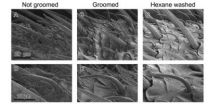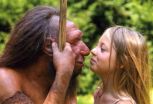(Press-News.org) Please cite the Bulletin of the Seismological Society of America (BSSA) as the source of this information.
The Osaka Basin, Japan is home to many high-rise buildings that sit atop its thick soft sediments, vulnerable to long-period strong ground motions that last minutes. A new map created by Japanese researchers is intended to guide engineers and city planners in new construction and identifies existing buildings with the potential of resonance vibration.
The Osaka Basin in western Japan is surrounded by short mountain ranges, affected by large (M 8+) interplate earthquakes generated outside of the basin. Interplate earthquakes occur at the boundary between two tectonic plates. Historical literature suggests interplate earthquakes have occurred here repeatedly, recurring approximately every 100 years.
Mitigation of future large earthquake damage is of critical importance to the area, particularly given its large population and many high-rise buildings. Using a 3D subsurface structure model of the Osaka Basin, ground motion records and analysis of the basin's geological features, researchers computed the predominate periods of earthquake motion for the entire basin. The resulting map provides useful information for engineers to design earthquake resistant buildings.
While most high-rise buildings in the Osaka Basin, according to this study, show little risk of vibrating resonantly with strong ground motion, the authors suggest that the map "provides a warning concerning resonant vibration to high-rise buildings." The authors identify specific high-rise buildings that should be re-evaluated for seismic safety and retrofitting.
###
"Long predominant period map and detection of resonant high-rise buildings in the Osaka Basin, western Japan," BSSA, 103:1; by Ken Miyakoshi of the Geo-Research Institute; Masanori Horike and Ryoji Nakamiya of the Osaka Institute of Technology.
Osaka Basin map: Identifies high-rise buildings at risk from quakes
2013-02-05
ELSE PRESS RELEASES FROM THIS DATE:
Grooming helps insects keep their senses sharpened
2013-02-05
Like a self-absorbed teenager, insects spend a lot of time grooming.
In a study that delves into the mechanisms behind this common function, North Carolina State University researchers show that insect grooming – specifically, antennal cleaning – removes both environmental pollutants and chemicals produced by the insects themselves.
The findings, published online this week in Proceedings of the National Academy of Sciences, show that grooming helps insects maintain acute olfactory senses that are responsible for a host of functions, including finding food, ...
Antibody hinders growth of Gleevec-resistant gastrointestinal tumors in lab tests
2013-02-05
STANFORD, Calif. - An antibody that binds to a molecule on the surface of a rare but deadly tumor of the gastrointestinal tract inhibits the growth of the cancer cells in mice, according to researchers at the Stanford University School of Medicine.
The effect remains even when the cancer cells have become resistant to other treatments, and the findings may one day provide a glimmer of hope for people with the cancer, known as gastrointestinal stromal tumor, or GIST. The scientists hope to move into human clinical trials of the antibody within two years.
The antibody's ...
USC scientists design mouse with more human-like immune response
2013-02-05
LOS ANGELES — Medical scientists at the University of Southern California (USC) have bred a first-of-its-kind mouse model that possesses an immune response system more like a human's. The discovery makes way for quicker and more cost-effective development of next-generation drugs to treat human diseases like cancer, diabetes and tuberculosis.
Medical researchers have long used mice and rats to help formulate new drugs and vaccines, in part because their genetic and biological characteristics closely parallel human physiology. But mice are not humans, and many experimental ...
Cells predict onset of graft-versus-host disease in men receiving BMTs from female donors
2013-02-05
STANFORD, Calif. — Stanford University School of Medicine investigators have identified a clutch of cells that — if seen in a male patient's blood after receiving a brand-new immune system in the form of a bone-marrow transplant from a female donor — herald the onset of chronic graft-versus-host disease, or cGVHD. In this devastating syndrome, the patient's tissues come under a vicious and enduring assault by the transplanted cells.
"The overwhelming majority of patients who have these cells in their blood either have or will develop cGVHD within one to three months," ...
3D printing breakthrough with human embryonic stem cells
2013-02-05
A team of researchers from Scotland has used a novel 3D printing technique to arrange human embryonic stem cells (hESCs) for the very first time.
It is hoped that this breakthrough, which has been published today, 5 February, in the journal Biofabrication, will allow three-dimensional tissues and structures to be created using hESCs, which could, amongst other things, speed up and improve the process of drug testing.
In the field of biofabrication, great advances have been made in recent years towards fabricating three-dimensional tissues and organs by combining artificial ...
'Default' options influence patient choices in advance care directives, Penn study shows
2013-02-05
PHILADELPHIA – Advance care directives allow patients to provide instructions about their preferences for the care they would like to receive if they develop an illness or a life-threatening injury and lose the capacity to make decisions for themselves. While many people may assume that patients have strong preferences for the type and aggressiveness of care they wish to receive near life's end, a new study by researchers at the Perelman School of Medicine at the University of Pennsylvania suggests that for many patients, preferences for end-of-life care are constructed ...
Experimental therapy crosses blood-brain barrier to treat neurological disease
2013-02-05
CINCINNATI – Researchers have overcome a major challenge to treating brain diseases by engineering an experimental molecular therapy that crosses the blood-brain barrier to reverse neurological lysosomal storage disease in mice.
Posted online in PNAS Early Edition on Feb. 4, the study was led by scientists at Cincinnati Children's Hospital Medical Center.
"This study provides a non-invasive procedure that targets the blood-brain barrier and delivers large-molecule therapeutic agents to treat neurological lysosomal storage disorders," said Dao Pan, PhD, principal investigator ...
Body language can predict outcomes for recovering alcoholics
2013-02-05
To predict whether a problem drinker will hit the bottle again, ignore what they say and watch their body language for displays of shame, a University of British Columbia study finds.
The study, which explored drinking and health outcomes in newly sober recovering alcoholics, is the first to show that physical manifestations of shame – from slumped shoulders to narrow chests – can directly predict a relapse in people who struggle with substances.
"Our study finds that how much shame people display can strongly predict not only whether they will go on to relapse, but ...
20 hours of TV a week almost halves sperm count
2013-02-05
Healthy young men who watch TV for more than 20 hours a week have almost half the sperm count of men who watch very little TV, indicates a study published online in the British Journal of Sports Medicine.
Conversely, men who do 15 or more hours of moderate to vigorous exercise every week have sperm counts that are 73% higher than those who exercise little, the findings show.
Semen quality seems to have deteriorated over the past few decades, although it's not clear why, say the authors.
To find out if an increasingly sedentary lifestyle might be a contributory ...
The last Neanderthals of southern Iberia did not coexist with modern humans
2013-02-05
The theory that the last Neanderthals –Homo neanderthalensis– persisted in southern Iberia at the same time that modern humans –Homo sapiens– advanced in the northern part of the peninsula, has been widely accepted by the scientific community during the last twenty years. An international study, in which researchers of the Spanish National Distance Education University (UNED) participate, questions this hypothesis.
"It is improbable that the last Neanderthals of central and southern Iberia would have persisted until such a late date, approximately 30,000 years ago, as ...

